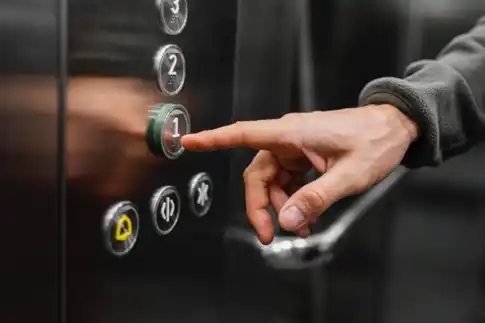Full escalator replacement
Full Escalator Replacement Advice Guide
23 July 2025
Escalators are a pivotal means of transportation in a building. A well-functioning escalator ensures smooth movement. However, the safety of an aged escalator is usually compromised. Over time, performance drops, and energy efficiency declines. So, how does one know when it is no longer a simple repair or a part replacement situation but a full escalator replacement?
Here are some tell-tale signs that indicate when you should opt for a full escalator replacement.
When Is the Right Time for Full Escalator Replacement? Signs and Solutions
- The Escalator Is More Than 20-25 Years Old
Most escalators are designed to last approximately two to three decades. Beyond this, irrespective of how frequently servicing is performed, mechanical parts begin to lose their efficiency, lubrication systems fail, step chains stretch, and the drive mechanism may need to be adjusted regularly.
When your escalator is over 20 years old, it is more economical to invest in a full escalator replacement than to attempt a series of repairs.
- Broken Down and Downtime Would be the Norm
If an escalator needs repair every few months, maintenance is not the issue, it is simply the result of further wear and tear.
Constant breakdowns affect both users and the building’s operations. At times, the unit remains out of service for more extended periods. In other instances, repairs take longer. In such scenarios, more consideration should be given to planning a replacement.
- Safety Compliance Issues
With changes in safety standards, older escalators may fail to meet the updated specifications. Such changes may pertain to handrail speeds, emergency braking, step illumination, or anti-slip features. If your unit lacks the newer safety features and upgrading it cost-effectively is not feasible, replacement is a better option.
- Visible Signs of Deterioration
Signs such as cracked or noisy steps, jerky movement, loose handrails, and squealing during operation indicate severe damage to the escalator. There are only limited things cosmetic repairs can do. Should these issues persist after a clean-up, you are likely looking at structural fatigue or worn-out components across the system.
- Rising Energy Bills
The older the escalator, the more energy it requires. In cases of heavy foot traffic, this would become a significant concern. So, if there is a sudden increase in energy consumption bills for vertical transport, a modern system upgrade would be beneficial in reducing long-term operating costs.
- Difficulty in Finding Spare Parts
When sourcing components becomes difficult, it results in longer-than-normal downtime. This also means the model is somewhat outdated. Manufacturers often stop producing parts for older systems after a certain point, and obtaining alternatives does not always guarantee compatibility or performance. So, opting for a full escalator replacement will save you time and ensure trouble-free operation.
- Upgrades Do Not Help
Partial modifications are often implemented to extend the escalator’s life. However, when key parts have been modernized, and performance or safety are not substantially improved, the next logical step becomes a complete replacement.
Solutions to Consider
- Assessment by Specialists: Having an authorized inspection team conduct comprehensive assessments on mechanical integrity, performance metrics, and user feedback data is the best place to start.
- Budgeting and Phasing: Escalator replacement is a capital expenditure. Phased replacement planning or setting aside a portion of the annual budget can ease the financial pressure.
- Selecting the Right Model: Focus on energy efficiency, user comfort, and conformity with present-day regulations when choosing the new system.
- Minimize Disruption: Select contractors who can organize the replacement with a short downtime. Alternative options can be set up for temporary use, such as lift signage or directions.
Final Words
Knowing when to opt for full escalator replacement isn’t always obvious. But these signs can be strong indicators.
A small step away from an obsolete unit means a significant leap toward safety, efficiency, and future-proofing the building infrastructure.
Comments / photos for the Full escalator replacement page welcome
